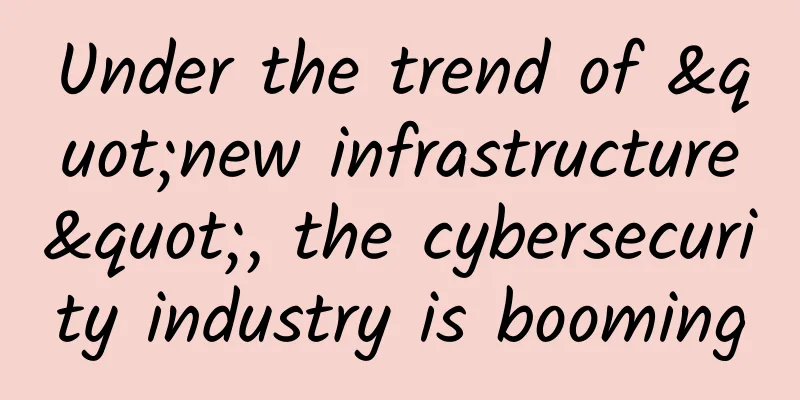Review of 2020丨Digital economy development has burst into surging momentum

|
Not long ago, the Fifth Plenary Session of the 19th CPC Central Committee adopted the "Proposal of the CPC Central Committee on Formulating the 14th Five-Year Plan for National Economic and Social Development and the Long-Term Goals for 2035", proposing to accelerate digital development, develop the digital economy, promote digital industrialization and industrial digitization, promote the deep integration of the digital economy and the real economy, and build a digital industry cluster with international competitiveness. The Central Economic Work Conference, which just concluded, specifically proposed to "vigorously develop the digital economy and increase investment in new infrastructure." Since the beginning of this year, the fight against the epidemic has provided a broad stage for the digital economy to unleash its potential and generate new momentum: on the one hand, the digital industrialization has accelerated, and new formats and models such as online education and telemedicine have grown rapidly, activating consumer demand and expanding employment. On the other hand, the digitalization of industries has accelerated, and digital technologies such as the industrial Internet, big data, and artificial intelligence have been deeply integrated with the manufacturing industry, helping to revitalize traditional industries. A large number of new formats and models of the digital economy have emerged rapidly, playing an irreplaceable role in helping to prevent and control the epidemic, safeguard people's lives, offset industry pressures, drive economic recovery, and support stable employment, and have a significant driving effect on the overall economy. During the 13th Five-Year Plan period, my country's digital economy achieved leapfrog development. Driven by new information and communication technologies and new formats, my country's digital economy has developed strongly. According to the "Report on the Calculation of the Scale of China's Digital Economy and the Outlook for the 14th Five-Year Plan" released this year, it is expected that the digital economy will most likely maintain a rapid growth momentum during the 14th Five-Year Plan period, reaching 32.67 trillion yuan by 2025, and the overall nominal annual growth rate of the digital economy during the 14th Five-Year Plan period will be 11.3%. Digital industrialization drives new development with new momentum In 2020, the sudden outbreak of the COVID-19 pandemic brought a shock to economic development. Under the epidemic prevention and control, the digital economy with data as the key production factor ushered in new development opportunities. The epidemic has stimulated the vigorous rise of new technologies, new formats and new platforms such as 5G, artificial intelligence and smart cities, and the "non-contact economy" such as online shopping, online education and telemedicine has been fully accelerated. Relying on innovation in information technology to drive digital industrialization and constantly give birth to new industries, new business forms and new models has become a new path for economic development. Huoshenshan Live During the epidemic, new-generation information technologies such as 5G, big data, cloud computing, artificial intelligence, and industrial Internet have shown their prowess, bringing about a significant improvement in work and life efficiency. The central government has intensively deployed to accelerate the construction of new infrastructure such as 5G networks and data centers, precisely because it has seen the significant driving role played by the rapid advancement of digital industrialization in expanding effective investment, promoting consumption upgrades, and creating and stimulating employment. At this year's National People's Congress and the Chinese People's Political Consultative Conference, new infrastructure construction was written into the government work report for the first time. Compared with traditional infrastructure, new infrastructure can not only play the inherent role of traditional infrastructure, but more importantly, it can obtain a greater multiplier effect than traditional infrastructure. New infrastructure with digital infrastructure as the core provides more network effects, platform effects, and empowerment effects, which can trigger the emergence of a large number of new industries, new formats, and new models. Under the impact of the epidemic, catering, accommodation, tourism and other service industries have been largely shut down, replaced by online retail, online education, online entertainment, video conferencing, remote office, etc., which has accelerated the digitalization of the life service industry and spawned new formats and models represented by contactless services. Among them, the user scale of online education, online government affairs, online payment, online video, online shopping, instant messaging, online music, search engines and other applications has grown rapidly, with an increase of more than 10%. At the beginning of 2020, primary and secondary schools across the country postponed the start of school, and 265 million students generally turned to online courses. User demand was fully released, and online education applications showed explosive growth. Digital life services not only ensure people's daily life, study and work during the epidemic, but also show strong development resilience, becoming an important force to support the survival and development of small and medium-sized enterprises. The development of digital technologies such as the Internet, big data, and artificial intelligence has promoted the process of onlineization of offline service scenarios and digital transformation of the service industry. China Telecom, China Mobile, and China Unicom have built cloud platforms such as remote office and online classrooms based on 5G and fiber-optic broadband networks. Experts analyzed that looking forward to the "14th Five-Year Plan", digital industrialization is expected to reach a new level: from the perspective of new technologies, digital technologies represented by 5G, big data, artificial intelligence, etc. are accelerating breakthroughs, and the integrated innovation results with manufacturing, energy, materials and other fields are becoming more and more abundant, which will promote changes in production methods and improve production efficiency; from the perspective of new facilities, information transmission networks are accelerating their evolution towards a new type of infrastructure that integrates perception, transmission, connection, storage, and computing; from the perspective of new business formats, mobile applications, mini-programs and other product forms have emerged one after another, and cross-border integration is accelerating. Industrial digitalization helps traditional industries upgrade Promoting the digitalization of industries and using new Internet technologies and applications to carry out all-round, all-angle, and full-chain transformation of traditional industries can improve total factor productivity and unleash the amplifying, stacking, and multiplying effects of digitalization on economic development. On November 20, General Secretary Xi Jinping sent a congratulatory letter to the 2020 China 5G+Industrial Internet Conference, pointing out that the integration of 5G and the industrial Internet will accelerate the construction of a digital China and a smart society, accelerate China's new industrialization process, inject new impetus into China's economic development, and create new development opportunities for the world economy shrouded in the shadow of the epidemic. The cases presented at the 2020 China 5G+ Industrial Internet Conference concentratedly reflect the latest achievements of industrial digitalization this year. 5G is an important direction for the upgrading of the new generation of information and communication technology, and the industrial Internet is a development trend for the transformation and upgrading of the manufacturing industry. When the rising star of technology meets the manufacturing trend, it will undoubtedly become an important driving force for the digital transformation of the manufacturing industry. For example, "5G ultra-high-definition machine vision quality inspection" has solved the world-class problem of the chemical fiber industry. Drifting silk and impurities is a world-class problem that has plagued the chemical fiber industry for more than ten years. Xinfengming's annual waste caused by drifting silk and impurities reaches 3,600 tons. Based on the 5G ultra-high-definition machine vision quality inspection system, the inspection robot shoots a beam of auxiliary light to the silk thread, turning the previous observation of the entire silk thread into a judgment on whether the light spot array formed by the light source on the cross section of the polyester fiber bundle is complete, successfully achieving 100% accuracy of robot inspection. Accelerating the digital transformation of industries will help to strengthen the new momentum of the real economy. At the end of June this year, the "China Industrial Digitalization Report 2020" jointly released by the Information and Industrial Development Department of the National Information Center and JD Digital Technology Research Institute stated that industrial digitalization refers to the process of digital upgrading, transformation and reconstruction of all elements of the upstream and downstream of the industrial chain, with data as the key element, value release as the core, and data empowerment as the main line, under the support and guidance of the new generation of digital technology. Industrial digitalization can not only help traditional enterprises to transform and recreate new advantages in enterprise quality and efficiency, but also promote industrial quality and efficiency improvement and reshape the new pattern of industrial division of labor and cooperation. At the same time, it can breed new formats and new models and accelerate the transformation of new and old kinetic energy. Experts analyzed that during the "Thirteenth Five-Year Plan" period, my country's industrial digitalization process accelerated. In 2019, the added value of industrial digitalization reached 28.8 trillion yuan, a nominal increase of 16.8% year-on-year. The proportion of enterprises engaged in networked collaboration, service-oriented manufacturing and personalized customization nationwide reached 35.3%, 25.3% and 8.1% respectively. It is expected that during the "Fourteenth Five-Year Plan" period, industrial digitalization will achieve substantial development. Looking back at 2020, under the guidance of the new development concept, my country actively promoted digital industrialization and industrial digitization, guided the deep integration of the digital economy and the real economy, and promoted high-quality economic development. Looking to the future, whether it is to promote the optimization and upgrading of the industrial structure, accelerate the transformation of new and old kinetic energy, or improve the quality of people's lives, it requires us to accelerate the development of the digital economy, promote digital industrialization and industrial digitization, promote the deep integration of the digital economy and the real economy, and build a digital industry cluster with international competitiveness. |
>>: HTTP, TCP, IP, and Ethernet in one article
Recommend
VMISS 20% off for all items, Korea/Japan/Hong Kong CN2/Los Angeles CN2 GIA/9929/CMIN2 etc. starting from 21 yuan/month
VMISS updated its promotional plan in December an...
Don’t always blame your router for a bad network. The truth is here.
It is undeniable that with the development of the...
FDCservers: XEN in Hong Kong/Japan/Singapore and other data centers, monthly payment starts from $1.98
The tribe has shared information about FDCservers...
5G communication requires tens of millions of base stations! How to build so many?
"With the advent of the 5G era, mobile commu...
A complete history of web crawlers
[[415987]] The well-known research organization A...
China Unicom and China Telecom refuted the rumor that some 5G networks were shut down and the first batch of users were abandoned
Some media reported that "the first tens of ...
PacificRack Chinese Valentine's Day discount: $13.14/year KVM-2GB/60GB/1TB/Los Angeles data center
PacificRack, referred to as PR, is a site under Q...
Huawei introduces AI into the telecommunications industry to build an autonomous network that never fails
On April 18, 2018, at HAS2018, Huawei released th...
Wi-Fi vs. Ethernet: Which should you use and why?
Not long ago, you had to choose between a wired o...
Tech Neo October Issue: Concurrency Optimization
51CTO Network+ Platform launched the "TechNe...
Tribute to hackers | Review of the exploration of memory virtualization
[[415610]] Cloud and virtualization Cloud computi...
If you are in the communications industry, you will be out if you don’t understand these nine 5G issues
China's 5G era has arrived as promised! The f...
5G makes IP network a trillion-dollar market, and 8 years of network upgrades have been hard on operators
Through the concentrated bombardment of media pro...
Connecting the industrial ecosystem, 5G accelerates the empowerment of thousands of industries
As the saying goes, a single tree cannot make a f...









